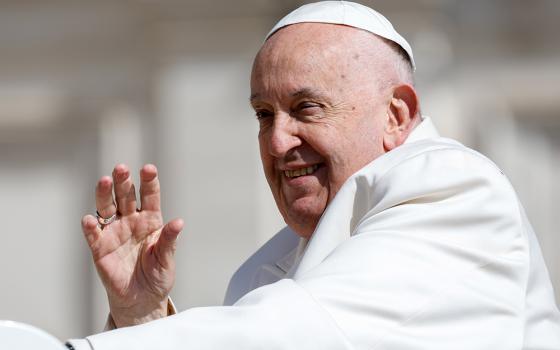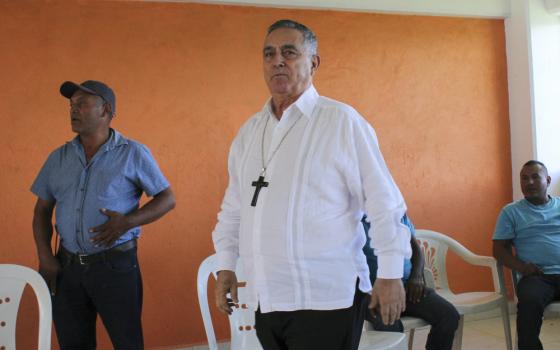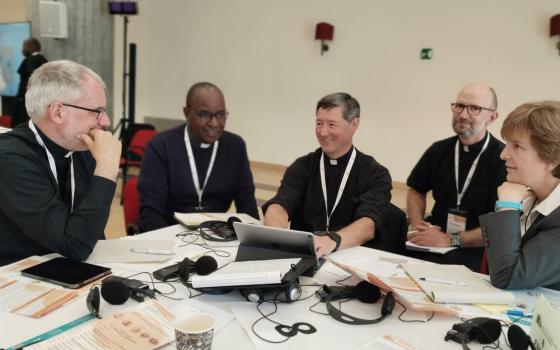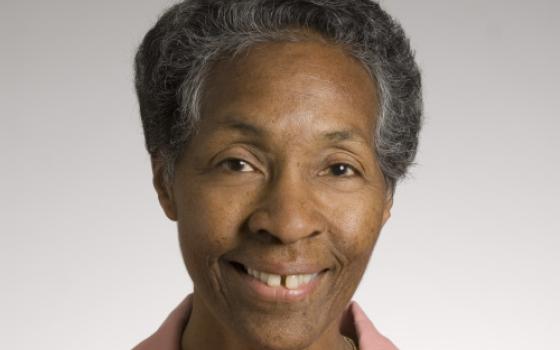By JOHN L. ALLEN JR.
Rome
tSpotting contenders for the papacy and choosing a Quiz Bowl team are obviously very different things, but more and more they have one thing in common: Cardinal Gianfranco Ravasi, President of the Vatican’s Pontifical Council for Culture, looks like a plausible candidate to make both cuts.
Certainly there’s never been any doubt about the intellectual chops of the 68-year-old Italian prelate, whom Pope Benedict XVI recently inducted into the College of Cardinals during a Nov. 20 consistory. Whenever Ravasi appears in public, he coughs up literary allusions the way two-pack-a-day smokers do phlegm – regularly, and without thinking about it.
On a Friday evening in early December, for instance, Ravasi offered an impromptu welcome for a lecture at the Vatican by Cambridge cosmologist John Barrow. In the course of just fifteen minutes, Ravasi dropped ten references, including Nietzsche, Kant, Levi-Strauss, Stephen J. Gould, and Isaac Newton – a pace of one quotation every minute and a half. For bonus points, Ravasi added that he’s read not only Newton’s best-known works, but also his obscure commentary on the Book of Revelations – which, Ravasi laughingly said, was “awful”.
(A Biblical scholar by training, Ravasi is able to range so widely in part because he only sleeps about four hours every night, and he generally fills that extra time with books.)
Like the smart kid in the class often does, Ravasi has the courage of his convictions. Last year he hosted a major Vatican conference on evolution, inviting scientists and believers into dialogue – despite what he calls the “terror” of some in the Vatican, who felt it might open doors better left closed. (Ravasi says that Benedict XVI backed him on the project “completely”.)
Some observers have suggested that one day, those same qualities could make Ravasi an attractive papal candidate.
Conventional wisdom has it that whenever the cardinals next gather for a conclave, they will be looking to fix at least two perceived problems: An administrative mess in the Vatican, and chronic PR woes. Depending on how things break, Ravasi could seem a solution on both fronts.
For one thing, there’s still a tendency in clerical circles to assume that Italians carry a special gene for church governance. Ravasi is a Vatican “insider,” but one not associated with any recent crisis. Rumors in Rome currently peg Ravasi as a candidate to succeed Cardinal Dionigi Tettamanzi in Milan, and if that were to happen, it could further assuage any doubts about his managerial abilities.
In PR terms, Ravasi always seems to have the right touch. He’s funny, open, a man of Christian tradition fully at home in the post-modern world. He’ll have the chance to strut that stuff again next March, when Ravasi hosts a major dialogue in Paris between believers and non-believers, involving the Sorbonne, UNESCO, and the Academie Francaise, in the first major event of a project he’s calling “The Courtyard of the Gentiles.” (Ever the Biblista, Ravasi takes the name from the space in the ancient temple in Jerusalem which was not exclusively reserved to Israelites, but open to everyone.)
Whether or not Ravasi ever gets a serious look for the church’s top job, he’s already an important point of reference, especially in an era in which leaders skilled at engaging the culture outside the church tend to be in short supply.
That capacity isn’t just a matter of instinct. Ravasi has thought at length about communications, especially how the church in the early 21st century ought to engage the new media revolution – the age of kindles and iPads, 4G mobile phones and net-books, and so on. That was the subject of a recent plenary assembly of the Pontifical Council for Culture, and Ravasi sat down in his Vatican office on Dec. 11 to talk communications – including, inevitably, the Vatican’s own struggles to stay “on message.”
The following is an NCR translation of excerpts from that conversation, which took place in Italian.
* * *t
Your plenary assembly dealt with the “Culture of Communications.” What came out of it?
First of all, we’re facing today a radical change in communications. That may seem obvious, but the ecclesiastical world isn’t always as aware of what’s happening as we should be. We’re talking about the new world of communications that began to emerge, I suppose, in the era of McLuhan, even if McLuan is clearly outdated today.
The second element would be the multiplicity – if we want to use a fancy term, the “polymorphism” – of languages used in communications today. There’s the classical language of art, for example, which is why we invited an architect, a movie director, a musician and so on. There’s the language of the liturgy, religious language, which is often symbolic. There’s the language of different generations, the language of the Internet, even the language of the cell phone.
The third element, more specific to the church, is the “gap” between the language in which certain truths are expressed, and which have therefore become wrapped up with those truths, and the way that language is understood. If we’re talking about Christology, there’s a language I can’t just set aside, words like ‘nature’ and ‘substance,’ but there’s also a necessity to transcribe that language in the contemporary culture.
There’s a whole line of reflection on this point, including a great modern study of rhetoric by [Lucie] Olbrechts Tyteca, which shows that a classical language carries an inheritance of content, with very precise ideas, precise formula, and so on. Whenever I pass from that language to another, I lose something. I eventually acquire something else, but in any event, it has to be done. There are plenty of examples – for example, the enormous change that occurred when Paul introduced the Greek language with respect to Christianity’s original Semitic matrix. Something was lost, and something else was gained. Or, think about Chalcedon, where the council used terms such as ‘substance,’ ‘nature,’ and ‘person,’ which aren’t Biblical categories. For that matter, they aren’t categories that come from Paul.
They also aren’t categories easy to translate in the world of today.
Exactly, it’s the same mechanism. So, we can’t just say that in order to maintain the purity of our message, we’re going to keep on using the same categories. The result of that is usually that people don’t understand anything we say. What you get is deafness, not communication.
Would you say that the world of communications – in particular, the media – also has a responsibility to learn the culture and the language of the church, if it wants to understand what the church is all about?
Yes, of course. Walter Ong, the famous disciple of McLuhan who was an American Jesuit, has some great lines on how “to listen” actually means “to make an effort to understand.” It’s not a neutral act. If the other party isn’t making an effort to understand you, it doesn’t matter how fantastic you are – inevitably, there isn’t communication.
To be honest, sometimes that failure to understand is just basic laziness. How often do you see journalists, for example, who want to rely on a few texts handed to them in a file folder to write their stories, and who never see what’s really being said, what people really feel and think?
Let me give you a recent example. This week, I went up to Milan to celebrate the feast of the Immaculate Conception. The day before, I got calls from Italian newspapers, all of them asking for the text of the homily I was going to give. Of course, they wanted to see if I was going to say something they could play up as a hint about my returning to Milan as archbishop! I told them I didn’t have a text, because I was going to speak without notes. They were disappointed, and they asked me, ‘What are we supposed to do?’ I said, ‘Come up! Listen to what I say, and then write whatever you want.’ It was as if I was asking too much.
There’s a great line from Karl Kraus, which is obviously exaggerated, but it also has some merit to it: ‘What’s the relationship journalists have with the truth? It’s the same relationship that fortune tellers have with metaphysics.’
Let’s talk about the church’s side of the equation. In the Vatican today, we have a paradox: a pope who’s a talented communicator, yet a communications system that seems dysfunctional. How do you explain it?
It’s a problem for all institutions which are, in a certain sense, self-referential. I’m talking about environments which have their own life, their own protocols and systems, and their own internal language, which is usually full of winks and nods and subtle references. Quite often, even if they’ve got formal press offices and so on, there’s not really a strong level of attention to contemporary culture and its evolution. The result is a mistaken belief that if they simply put together a statement, everyone ought to understand it. In reality, it’s comprehensible only on the basis of the culture that produced it.
Benedict XVI is indeed a very good communicator, but it’s not because he’s got a language that’s necessarily easy or contemporary. The point is, he’s a man of culture. For that reason, he’s sensitive to the outside world. He knows that if you use a certain tone that’s too high or too low, if you’re not adapted to the need for rigor sometimes and other times for flexibility, you don’t communicate well.
For me, the lesson is that the church has to emphasize the importance of cultural formation. Sometimes things blow up on you because you haven’t succeeded in understanding the temper of the times. If you know how people live, how they judge things, what the external atmosphere is like, you’ll succeed in communicating.
You know, the concept of ‘culture,’ the word ‘culture,’ was invented around 1700 in Germany … ‘Kultur.’ Then and there, it meant exclusively the highest aristocratic reflection – art, science, and so on. Now the concept of ‘culture’ has become anthropological, as a component of what defines us, based on the realization that people are shaped by their experiences. We talk about ‘industrial culture,’ for example. It’s applied to everything. Having become anthropological, the cultural element has to be considered a fundamental part of proclamation, as well as a fundamental part of formation of the clergy, of our priests.
Tell me about the “Courtyard of the Gentiles.”
We’re trying to promote communication with ‘the other,’ meaning people who have very different conceptions of life. Paris will be the first major event, March 24-25. By design, these are encounters of a very high level. The idea is to hear one another out on the great anthropological and ethical questions, looking at religious and secular conceptions. We also intend to focus on spirituality, which is actually of interest even to non-believers.
In Paris, the first figure to offer to help was someone very famous in France, the philosopher and linguist Julia Kristeva. She’s a non-believer, but in my opinion she’s written an absolutely splendid text on Teresa d’Avila. It’s a literary and psychological analysis … you know, Teresa d’Avila was a genius, with a golden language. We can communicate with each other because we share an intellectual language, even if we have content and approaches which are completely different.
We’re working with three different institutions: the Sorbonne, UNESCO, and the Academie Francaise. At the Sorbonne, the idea is to involve students as well as their best-known French thinkers. With UNESCO, we can introduce politics into the discussion a bit. Mitterand also will come, because although he’s a politician, he’s also an intellectual.
In the evening we’re organizing something for young people – not to put them into a ghetto, but to be sensitive also to their own language and style of communications. In the external courtyard of the Cathedral of Notre Dame, there will be a performance for young people, both believers and non-believers. It’s entertainment, but it too is intended to be on a high level. We’ve already found actors who will read texts – for example, from Nietzsche and from Paschal. One of the popular new French philosophers, Fabrice Hadjad, will take part. Naively, I suggested we should invite Gérard Depardieu, and I was told that younger people in France these days aren’t interested in him! Instead we’ll have an actor from the movie “Gods and Men,” about the monks of Tibhirine, one of the most successful French films in recent years.
There will also be music, the type of music that appeals to young people, naturally. I also got a wonderful idea from my friend Brother Alois, from Taizé. He suggested that Taizé would put together an experience of prayer. The idea is that after the performance is over, the texts and the music and so on, the young people who want to – the believers, obviously, but also the non-believers who might be interested – can see what it means to pray. The plan is to open the doors of Notre Dame and enter the cathedral, where the members of Taizé will host an experience of prayer with chant and so on, the way they know how to do it so well.
Ultimately, the idea is dialogue – we make an effort to understand others, and they try to understand us, in a situation of equality.
Will Benedict XVI be involved?
I’ve already sent a letter to Monsignor Georg [Gänswein, the personal secretary of Pope Benedict XVI], and I’m hoping that for the evening in the courtyard we can arrange a satellite connection with the pope, so a few young people can ask him questions, both believers and non-believers. I hope it works out, though of course I understand the difficulties involved in something like that. He does very well in that sort of a dialogue, for example when he takes questions from priests or from young people in St. Peter’s Square. If it’s not possible, we’d be happy with a written message, but a message obviously doesn’t have the same force.
In the future we intend to organize high-level dialogues in other places as well, including Washington and Chicago. We’re working on one in November in Stockholm, which is a bit of a curiosity in that it’s being organized by the Pontifical Council for Culture and the Embassy to the Holy See, but the believers I’m inviting are actually Lutherans! Sweden has a sort of popular national atheism that’s very different sociologically from Italy, or for that matter even France … teachers, doctors, ordinary people. It will be very interesting to try to understand that culture.
In the area of dialogue with culture, do you see a specific contribution that the church in the United States can make?
I think one example would be something else we’re working on, which is the dialogue between theological language and scientific language. I don’t mean just in terms of debates over bioethics, which are obvious, but as conceptions of the human person and the world.
You remember the famous congress we hosted last year on evolution, on the anniversary of ‘The Origin of Species,’ which turned to be a very high-quality event. To tell you the truth, there was a bit of terror about it in the Vatican! People were worried, they were arguing over it, and some said that if we were going to host a meeting like this, it should be done by the Congregation for the Doctrine of the Faith. I have to say, however, that I’ve always had the complete support of the pope. Even though I have an intellectual background and a sensitivity that might be slightly different, he’s always supported me. I would say the same thing about my nomination as a cardinal, because it came from him.
In any event, that congress is a model for the dialogue with science I have in mind, especially in terms of language, because when we’re talking with scientists we obviously can’t use an apologetic language. The dialogue has to have a certain rigor. It has to have a fairly rigorous epistemological and methodological foundation.
I believe that the United States is fundamental to this dialogue, because it has a level of scientific culture that’s extremely high. Today, of course, there are others … India, for example, in some ways has outpaced the United States in computer technology, especially software. In general, however, one can’t have a serious dialogue with the world of science without engaging the United States. We’ve begun to talk with Harvard, and with Notre Dame. We’ve developed a friendship with Cardinal [Donald] Wuerl of Washington. He sent two people here who are interested in the field of science, to see what they can do in their diocese. The idea is to organize a smaller version of our STOQ program [‘Science, Theology and the Ontological Quest’].
When I got here, this office had almost no relationship with the United States. It struck me as a paradox, given the importance of the United States, and I hope to keep moving in this direction. I also have to say that I think the current U.S. Ambassador to the Holy See, Miguel Diaz, could be a real help. We’ve become friends, and he has the advantage of not being solely a diplomat, but of also having a theological formation. That’s true of his wife as well.
I also think the United States can help us understand the post-McLuhan era of communications. I’ve read a great deal of McLuhan, and I like his work a great deal. Among his essays, for example, I’ve always enjoyed ‘The Mechanical Bride,’ which has so many good lines. It was McLuhan, for example, who observed that the new public rhetoric is the rhetoric of the huge advertising companies.
Anyway, one of his claims, which I think is still true even if a bit outdated, is that the means of communication have become an appendix to our bodies. Take the cellular phone, which today is typically used via a small device that sits in our ear. The Japanese have cameras in their glasses. Today, however, I think something else is happening. Instruments of communication haven’t just become part of our bodies, they actually constitute the atmosphere in which we live. It’s not possible anymore to cut one of those body parts off and reject the new culture of communications; you can’t reject it, because it’s inside everything. It’s the air we breathe. I think of the United States as the place, more than any other, which demonstrates this ‘totality’ of a communications-driven culture. Wikileaks is just the latest example!








